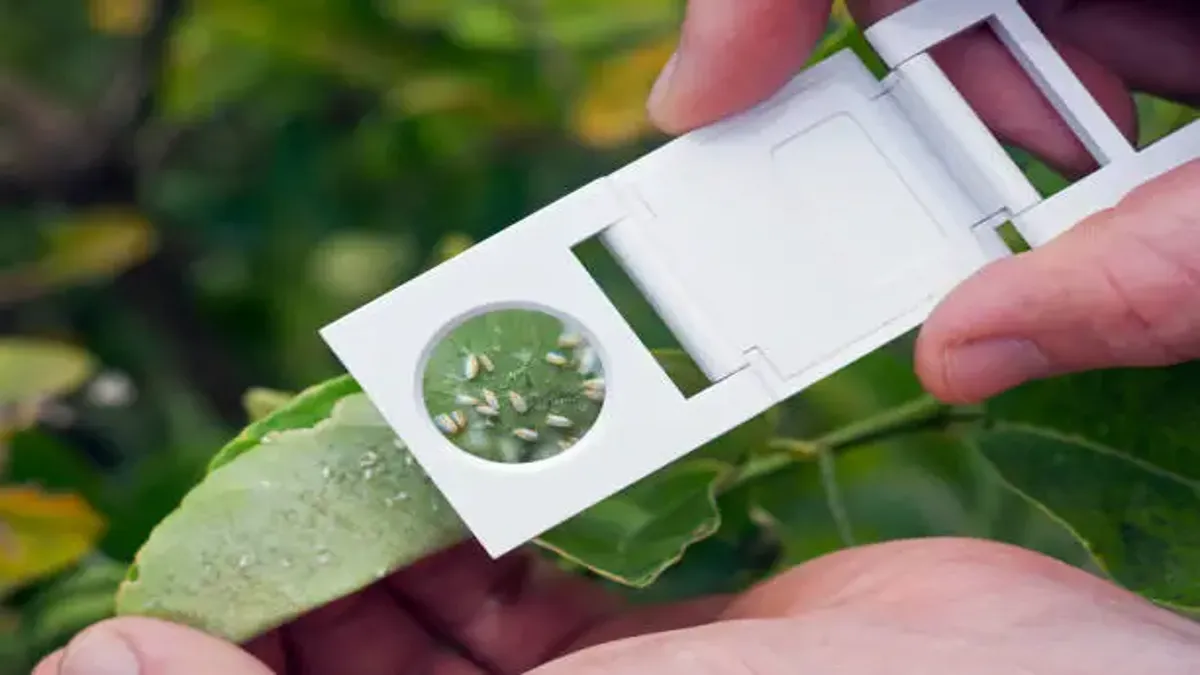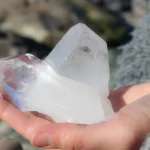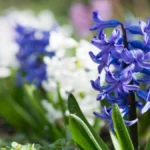If you’ve ever come inside from an evening walk with a row of tiny, maddeningly itchy bites and asked, “what bit me?” the answer may be a no-see-um. In the first 100 words: no-see-ums are minuscule biting midges — often nearly invisible to the naked eye — whose bites produce disproportionate irritation and, for some people, notable allergic reactions. They are not mosquitoes, though they share ecological niches and a thirst for blood; they are a distinct group of tiny flies whose life cycle, habitat, and behavior create a unique set of problems for backyard comfort, public health, and pest management. This article explains what no-see-ums are, why they bite, how to recognize and treat their stings, and realistic strategies for prevention and control.
What Are No-See-Ums?
“No-see-um” is a common name applied to several genera of biting midges in the family Ceratopogonidae and related tiny flies; in some regions, other tiny dipterans are included in the vernacular. They are typically 1–3 millimeters long, winged, and fast-moving, often emitting a faint buzz that is easily missed. Their small size makes them difficult to see, hence the colloquial name. No-see-ums are found worldwide in temperate and tropical climates; they are most abundant near bodies of standing water, marshes, coastal wetlands, and even damp soil where larvae develop.
Biologically, these insects have a life cycle that includes egg, larval, pupal, and adult stages. The larvae are aquatic or semi-aquatic, feeding on microorganisms and organic debris; the adults are the ones that bite. Only the females bite — they require a blood meal to develop eggs — and their mouthparts are adapted to pierce skin and draw tiny amounts of blood. Unlike larger blood-feeding insects, their bites may leave only a pinpoint puncture on the skin but set off inflammatory reactions that can last for days.
Why No-See-Um Bites Sting So Much
There are several reasons why no-see-um bites often produce intense itching and swelling:
• Their saliva contains a cocktail of proteins that provoke the human immune system. The body reacts to these foreign proteins with histamine release, producing itch and redness.
• Because the bite is small and often goes unnoticed at first, scratching frequently follows, which increases tissue damage and prolongs inflammation.
• Some people develop sensitization after repeated exposures; subsequent bites can produce larger welts or even small blisters.
• Secondary infection from scratching can complicate what begins as a simple bite.
“People don’t underestimate mosquitoes and they should not underestimate these little midges,” an entomologist might say when describing the physiological irritation no-see-ums cause. Even though the amount of blood taken is negligible, the immunologic reaction is not.
How to Recognize No-See-Um Bites
No-see-um bites have characteristic features that help distinguish them from other insect bites:
• Size and distribution: individual bites are small, often appearing as pinpoint red papules. They frequently cluster in groups on exposed skin — ankles, wrists, the back of the neck, and anywhere clothing is loose.
• Timing: bites typically appear after being outdoors in the evening or early morning, or near damp habitats; they can be delayed in showing up by several hours.
• Symptom course: intense itching often begins within a few hours and can last from several days to a week; some individuals experience delayed swelling or persistent hyperpigmentation.
• Lack of visible insect: the offending insect is usually not seen, creating confusion for the bitten person.
A practical rule of thumb: if bites cluster on exposed skin after an evening outside and you didn’t see a mosquito or obvious insect, consider no-see-ums as a likely cause.
Table: How No-See-Um Bites Compare to Other Common Bites
| Feature | No-See-Um Bite | Mosquito Bite | Flea Bite |
|---|---|---|---|
| Size of insect | 1–3 mm (tiny) | 6–12 mm (larger) | 1–3 mm (small) |
| Bite appearance | Pinpoint red papule, often clusters | Raised, wheal-like, single or sparse | Small red dots, often around ankles |
| Typical location | Exposed skin (ankles, wrists) | Any exposed skin | Lower legs, ankles |
| Time of day | Dawn/dusk; evening | Twilight to night | Any time, often indoors |
| Itching duration | Days to a week | Several days | Several days |
| Visible insect likely? | Rarely | Often | Sometimes |
Where No-See-Ums Live and Breed
No-see-ums need moisture for their larvae. Their preferred breeding sites include:
• Coastal marshes and tidal flats — many species are abundant in saline habitats.
• Freshwater marshes, bogs, and shallow ponds — especially with organic detritus.
• Damp soil near streams, lately irrigated gardens, or poorly drained lawns.
• Man-made containers and potted plant trays that hold water for prolonged periods.
Their ability to exploit small, transient pools of water makes them harder to control than mosquitoes that need larger, more predictable breeding sites. Some species can also breed in leaf litter and wet compost piles, which draws attention to simple landscape maintenance as a prevention strategy.
The Ecology and Seasonal Patterns
No-see-um activity often follows a seasonal rhythm. In temperate climates, adults emerge in spring as temperatures rise and persist through late summer or into autumn, with peak activity often at dusk and dawn. In subtropical or tropical regions, activity may be year-round with peaks tied to rainy seasons. Weather patterns matter: wet springs and warm nights can increase populations, while extended droughts can reduce larval habitat and lower numbers.
Their ecology links them to food webs: larvae feed on microbes and detritus, and adults serve as prey for small insectivores — swallows, bats, and predatory insects. Understanding their role in local ecosystems helps in crafting control measures that reduce human nuisance while limiting ecological disruption.
Health Risks: Beyond Itch
Unlike mosquitoes and ticks, no-see-ums are not known for widespread disease transmission to humans. A few species have been implicated in transmitting pathogens to livestock and wildlife, and in rare contexts they may vector certain viruses or protozoans. For humans, the principal health concerns are:
• Intense pruritus (itching), leading to sleep disturbance, secondary infections from scratching, and in sensitive individuals, larger allergic reactions.
• Possible vector of localized disease in certain ecological pockets, though this is uncommon compared with mosquitoes.
• Psychological and quality-of-life impacts: numerous bites can significantly reduce enjoyment of outdoor living and lead to avoidance behaviors.
The risk profile suggests management should focus primarily on prevention and symptom control rather than large-scale public-health campaigns.
Personal Protection: Practical Strategies
Avoiding bites entirely may be unrealistic in high-infestation areas, but a layered approach reduces exposure:
• Clothing choices: wear long sleeves, long pants, and socks at dawn and dusk; choose fine-weave fabrics that no-see-ums struggle to penetrate.
• Repellents: products containing DEET, picaridin, or oil of lemon eucalyptus can reduce bites; apply according to label. Because these insects are tiny, repellents that remain effective against mosquitoes usually work against midges too.
• Screens and netting: ensure window and door screens are intact and mesh is fine enough (no-see-ums can get through standard mosquito mesh in some cases — consider ultrafine mesh for especially problematic homes).
• Fans and ventilation: these tiny flies are weak fliers; directing air movement over outdoor seating with fans can dramatically reduce landings.
• Timing outdoor activities: avoid dawn and dusk in peak seasons, and consider moving evening events indoors or under screened enclosures.
• Landscape adjustments: reduce standing water, maintain proper yard drainage, remove roof gutters’ debris, and avoid heavy watering that creates damp pockets.
“Bite prevention is cumulative,” a public-health nurse might advise. “No single measure is perfect, but the combination of repellent, clothing, and environmental changes reduces the odds significantly.”
Home and Yard Control: Practical, Ethical Options
Because no-see-ums breed in small, dispersed sites, complete eradication is unrealistic and ecologically undesirable. Instead, practical control integrates source reduction, habitat modification, and targeted treatments:
• Source reduction: empty containers, fix irrigation to avoid puddles, drain clogged gutters, and correct poor yard grading that traps water.
• Vegetation management: trim vegetation to increase sunlight and air flow; remove dense brush near patios.
• Barrier methods: install ultrafine mesh screens on porches or use screened tents for outdoor dining.
• Targeted larval control: in certain situations, biological larvicides that target dipteran larvae (for instance, Bacillus thuringiensis israelensis strains used for mosquito larvae) can be adapted carefully; however, their use should be judged against environmental considerations.
• Professional treatments: pest control operators can offer perimeter sprays timed for adult activity and apply larvicides to persistent breeding pools; many homeowners prefer non-chemical measures, but spraying may be appropriate for high-use recreation areas.
A measured, site-specific approach preserves beneficial insects while reducing human nuisance, and often yields the best long-term results.
Table: Prevention and Control Options — Pros and Cons
| Option | Pros | Cons |
|---|---|---|
| Fine-mesh screening | Very effective for enclosed spaces | Cost; requires correct mesh and installation |
| Repellents (DEET, picaridin) | Proven efficacy | Need proper application; reapply for long exposure |
| Fans/air movement | Non-chemical, immediate effect | Not practical for large open areas |
| Larval habitat reduction | Sustainable, long-term | May be labor-intensive; not always possible |
| Biological larvicides | Targeted, less ecological damage than broad sprays | Needs expert application; might not reach all sites |
| Perimeter adult sprays | Quick reduction in adult numbers | Can impact non-target species; temporary effect |
Treatment of Bites: What Works
When prevention fails, managing symptoms is the immediate priority:
• Clean the bites gently with soap and water to reduce infection risk.
• Apply cold compresses to reduce swelling and soothe itching.
• Over-the-counter oral antihistamines (cetirizine, loratadine) can lessen itch and systemic allergic responses; topical antihistamine creams may provide local relief but should be used with caution and per label directions.
• Topical corticosteroid creams (hydrocortisone 1%) reduce inflammation for moderate reactions; stronger prescriptions may be needed for severe allergic responses.
• Avoid scratching; keep nails trimmed and consider bandaging very itchy sites for children or people prone to infection.
• If secondary infection appears (increasing redness, warmth, pus), seek medical attention — antibiotics may be necessary.
• In rare cases of severe allergic reaction (widespread hives, difficulty breathing), emergency medical care is required.
A nurse educator might tell patients: “Treat the itch early; delay lets inflammation build and makes symptoms worse.”
Special Considerations: Pets and Livestock
No-see-ums bite a range of hosts. Pets may scratch excessively, leading to fur loss or infection; some livestock species can suffer stress and reduced feeding during heavy midge activity. Protective strategies for animals include:
• Stabling animals during peak midge activity times or using screened barns.
• Applying veterinarian-approved repellents or topical barriers where appropriate.
• Managing standing water around animal enclosures and improving airflow.
Veterinarians often emphasize that stress reduction in herds and flocks is important to maintain animal health and productivity.
Community and Public Health Measures
When no-see-um populations affect neighborhoods or recreational areas, coordinated community efforts yield the best returns:
• Municipal drainage improvements reduce breeding habitats for many dipterans.
• Public education campaigns about container cleanup and water management empower homeowners.
• Thoughtful, ecologically sensitive larvicide programs in public wetlands that prioritize native biodiversity can be considered in extreme nuisance situations.
• Encouraging developers and landscape architects to design drainage-friendly yards rather than water-retaining features in at-risk areas.
“Local planning matters,” an urban ecologist might observe. “Small design decisions at the municipal level ripple into everyday comfort and health.”
Myths and Misconceptions
A few persistent myths deserve correction:
• Myth: No-see-ums only live on beaches. Reality: Many species live inland in marshes, wet soil, and temporary pools.
• Myth: indoor life is safe. Reality: they can enter homes through gaps and through ordinary screens in large numbers when populations are high.
• Myth: all tiny bites are from fleas or bedbugs. Reality: the timing, location of bites, and presence of tiny pinprick welts often indicate midges.
• Myth: rubbing alcohol stops the itch. Reality: alcohol may briefly numb but can dry and irritate skin; better to use cold compresses and antihistamines.
When to Seek Medical Advice
Most no-see-um bites resolve without medical care. See a healthcare professional if:
• Bites show signs of bacterial infection (increasing redness, warmth, pus).
• There is a severe allergic reaction (widespread hives, swelling, respiratory difficulty).
• Symptoms persist beyond a week or worsen despite home care.
• You are unsure whether a rash or bites represent a different condition.
Primary care clinicians can offer prescription-strength topical steroids, oral steroids for severe allergic reactions, or antibiotics for secondary infections.
The Bigger Picture: Living with Tiny Insects
No-see-ums are a reminder that human comfort is an ecological negotiation. Complete elimination of every nuisance species is neither realistic nor ecologically sound. Instead, managing habitat, choosing sensible protective measures, and accepting some seasonal limits on open-air lifestyles can restore balance. In many communities, the solution is less about a single heroic measure and more about cumulative actions: good yard drainage, ultrafine screening around porches, careful use of repellents, and an acceptance that on certain humid, still summer evenings, tiny midges will remind us of our place in complex, living systems.
“Nature will always test our patience,” a seasoned naturalist might reflect, “but a little forethought makes the outdoors livable again.”
Research and Future Directions
Entomologists continue to study no-see-um ecology, host preferences, and sensitivities to control methods. Promising directions include:
• Improved, low-impact larval control agents that spare beneficial invertebrates.
• Development of wearable, long-lasting repellents tuned to tiny biting midges.
• Landscape design models that discourage microhabitats suitable for larval development.
• Community science projects that map local midge abundance to guide targeted interventions.
These approaches emphasize local solutions informed by science rather than broad chemical campaigns.
Final Thoughts
No-see-ums are small but consequential. They transform otherwise pleasant evenings into itchy ordeals and can influence the way we design homes, gardens, and public spaces. The best response combines humility (we cannot eradicate them), practicality (use repellents, screening, and fans), and local stewardship (manage water and vegetation). By understanding their biology, recognizing the bite pattern, and layering protection strategies, we reclaim outdoor life from the tiniest of adversaries.
“Don’t let the small size fool you,” a community health worker would say. “Tiny insects can teach us big lessons about preparedness, patience, and the power of small, consistent actions.”











